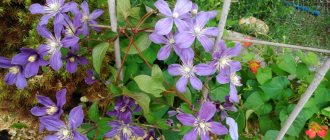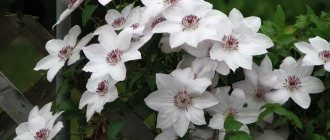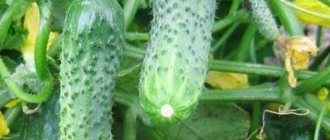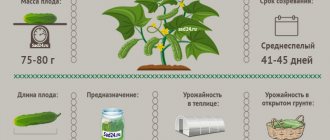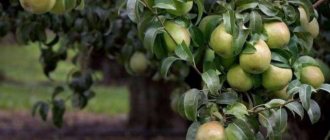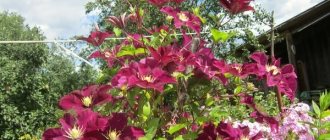Plants » Flowers
0
371
Article rating
Kira Stoletova
The ancient clematis Nelly Moser was bred by French breeders in 1897. It belongs to the Patens group - plants with large inflorescences. In our country it is grown everywhere, because it has good winter hardiness. Let's consider the main characteristics of the vine, the rules for planting it and the features of its care.
Clematis hybrid Nelly Moser
Description of clematis Nelly Moser
The height of the plant usually does not exceed 3 meters. A feature of this variety is active shoot formation: 12-15 shoots can grow on one bush per season, each of which produces 7-10 buds.
The flower stalks of "Nelly Moser" are long, up to 16 cm, the buds have a pointed shape.
The distance between nodes on the shoots is 12-18 cm. The leaves in the lower part of the bush (up to 9-15 nodes) are trifoliate, 16-20 cm long, and then simple, up to 10 cm long. Their color is dark green, their shape ovoid, with a pointed tip.
A feature of many varieties of clematis is a reduction in the size of flowers in plants that have reached 7 years of age. To prevent this, it is necessary to ensure access of water and nutrients to the deep layers of the soil (the root system of clematis goes into the ground to a depth of 1 meter).
The variety in question is used not only for vertical gardening, but also for creating a living “carpet”, as well as for planting in tubs on balconies and loggias. Many gardeners in central Russia note that the plant grown near the walls of houses tolerates winter well without the use of special shelters.
Like other varieties of clematis, this shrub is propagated by cuttings, dividing the bush or layering. In summer, propagation by layering is conveniently carried out vertically, by placing a box without a bottom on the bush in the spring and gradually sprinkling soil on the growing shoots.
You can dig in the stems horizontally both in spring and autumn.
The resulting young plants are separated from the mother bush a year later, when they have finally become stronger: in the first case next spring, and in the second - at the end of the next growing season (next autumn).
Flowers
"Nelly Moser" flowers are shaped like a star and usually have 6-8 petals with slightly wavy edges and a pointed tip. The flowers are impressive in size - 14-18 cm, some more than 20 cm.
The color is pale pink, with a lilac tint, with a bright purple stripe running down the center of each petal. The stamens are light, and the anthers are bright purple.
Important ! Some gardeners compare the expressive center of a flower to an eye, others to a spider (since the fluffy bright anthers are somewhat reminiscent of the legs of an insect). On the outside, the color of the petals is paler. The anthers of the flowers are bright purple and highlight the pale pink color of the petals.
Clematis blooms twice: on last year’s overwintered shoots in May–June and on new shoots in July–September. The second wave of flowering is not very abundant, but it lasts until frost.
Trimming group
Clematis “Nelly Moser” pruning group second. The variety is a classic representative of its group; it does not bloom very profusely on new shoots, and in short summer conditions it may not bloom again.
The main condition for successful wintering of clematis is maintaining the tillering center.
The second group involves partial pruning of plants. In summer, last year's shoots are pruned, removing the part where flowering has ended, leaving about 10 cm in length, and if the bush is too thick, then completely.
Note! In the fall, they must be completely removed in any case. Before winter, young shoots can be shortened by half, or to 3-4 buds.
In harsh winter conditions, the best solution is to cover the plants so that they are guaranteed to successfully overwinter.
Types of clematis
Today, more than 370 species of clematis have been bred through hybridization. Each of them is beautiful in its own way and is suitable for different uses for decorative purposes.
Clematis Armanda
A very heat-loving species, native to Myanmar, Vietnam and China. The liana reaches a length of up to 5 meters. Has delicate pinkish-white spring blooms. It is difficult to tolerate wintering (it can only withstand up to -12 degrees), and therefore it only makes sense to keep it in a winter garden.
Clematis Jacquemand
A bright and beautiful species of clematis, widely cultivated in North America and Europe. The plant is woody, reaches 3 meters. Belongs to pruning group 3.
Able to withstand cold winters, even in the absence of shelter, so it is well suited for our climate. Please note that you still need to cover the flower for the winter if you want to get flowering next year.
Clematis Mountain
Another popular species in ornamental gardening. The woody vine reaches a length of 8 meters, and therefore is very effective in vertical gardening.
Today, many varieties of mountain clematis have been bred, which can delight you with white, cream, hot pink, dark pink and lilac flowering.
Clematis viticella
Also known as lilac, violet, and vine clematis. It was cultivated in 1797. In nature, it is found in the vast expanses of Iran, Georgia, Asia Minor and Southern Europe.
Clematis Viticella is a shrubby vine reaching 4 meters. Can be colored in shades of purple, white and red. It tolerates frost very well down to -29 degrees.
Clematis alpine
The first complete description of the species dates back to 1768. In nature, it grows in temperate regions of Eurasia in the subalpine and mountain zones. Alpine clematis prefers rich calcareous soil and is not very demanding on water.
In the case of the middle strip, it can be planted in a sunny and slightly shaded area. In the open spaces of the southern regions, it is better to place the flower in the shade.
Clematis flowery
The species' distribution area is Japan and central China. It is a semi-evergreen or deciduous vine, reaching 4 meters. Loves neutral, well-drained, loose soil and abundant watering 2 times a week. Blooms from May to September.
Characteristics of the variety
Let's summarize some data about the variety in a table:
| Parameter | Characteristic |
| Genus | Clematis or Clematis |
| Growth form | bush liana |
| Type | Large-flowered |
| Group | Patens |
| Flowering period | May–June, re-blooming in July–September |
| Flowering type | On the shoots of last year, on the young shoots of the current year |
| Possibility of re-blooming | Yes |
| Flower color, structure | Light pink with a lilac tint, not terry |
| Flower size | Up to 20 cm |
| Plant height | 2-3 m |
| Frost resistance | High (can withstand temperatures down to −34 ℃) |
| Life cycle | Perennial |
| Trimming group | 2 (partial trimming required) |
| Purpose | Vertical gardening, decor |
| Sustainability | Does not like very sunny and hot places; does not tolerate stagnant water and overheating of the soil. Moderately affected by fungal diseases and pests |
| Inclusion in the State Register of the Russian Federation | Turned off |
Video
You can learn how to propagate any type of clematis by dividing the bush from the following video:
About the author:
Found a mistake? Select the text with the mouse and click:
Ctrl + Enter
Do you know that:
In Australia, scientists have begun experiments in cloning several varieties of grapes grown in cold regions. Climate warming, which is predicted for the next 50 years, will lead to their disappearance. Australian varieties have excellent characteristics for winemaking and are not susceptible to diseases common in Europe and America.
Application in landscape
Clematis Nelly Moser has become widespread in landscape design:
- grown as a tapeworm, planted in combination with other varieties to create a multi-colored climbing composition;
- used for landscaping arbors, arches, terraces, pergolas and other vertical surfaces;
- planted along fences in combination with low-growing plants - hostas, heather, marigolds, calendula.
Examples in landscape design
A flexible, pretty plant with large colorful buds can decorate any corner of the garden. So, the presented variety looks very beautiful against the background of coniferous ornamental trees or in the shade of lilac and viburnum bushes. You can use the flower in a vertical design.
You will get a very picturesque landscape if you braid a vine onto a gazebo, pillar, building facade, or gate. The plant looks unusual when developing an alpine slide. You can grow a vine among stones and other colorful flowers. An aesthetic appearance is also created when decorating garden arches.
Reproduction methods
The existing developed plant of the Nelly Moser variety is propagated by the following methods:
- Dividing the bush. To do this, you need to take a plant at the age of about 6 years. Dig it up and use a disinfected knife blade to divide the bush so that each part has buds in the area of the root collar.
- Lignified shoots. In the spring, in the place where the node forms, take last year's shoot and attach it to a container with nutrient soil. The pot must first be buried in the ground. When the shoot takes root and begins to grow, soil is periodically added to it. In the fall, a clematis seedling is ready for transplanting to a permanent location.
- Autumn layering. In mid-autumn, you need to take a vine vine and remove the leaves until a strong bud emerges. The shoot is rolled up and placed at full length in a groove filled with peat. Then sprinkle with hay or leaves. In the spring, the cuttings are well watered, and in the fall they will turn into strong clematis seedlings.
It is best to use methods with shoots and layering to propagate a flower, because if division is unsuccessful, the entire bush may die.
History of selection
Clematis began to be grown in Western Europe as a garden flower more than 400 years ago. This plant was especially loved in England. Already in the 19th century, new types of clematis were imported - plants with large buds were added to the small-flowered ones. In 1836, C. patens was brought to Europe from Japan. Today you can purchase almost any type of clematis for yourself.
Clematis Nelly Moser is shown in the photo:
Nelly Moser was used to develop varieties Lincoln Star, which looks like a lotus, Titania with almost white flowers, Nikolai Rubtsov with a beautiful purple color and others.
Features of cultivation
Clematis Nelly Moser should be planted in the spring, in April - May. Its basic requirements are standard for all clematis:
- a well-lit place with light shade during the midday hours;
- fertile, well-drained soil with an acidity of at least 7;
- mulching the ground surface within a radius of 1 meter from the base of the stems to protect the root system from overheating.
When planting near walls, the distance between the foundation and the planting hole is at least 70 cm. You cannot plant clematis near the northern walls and where the plants will be exposed to water flowing from the roof.
The size of the planting holes is 60x60x60 cm; at the bottom, drainage from broken bricks with a layer of 10–15 cm is required. After planting, the main buds of the seedling located at the root collar should be at a depth of 8–12 cm below the surface of the earth.
When planting, the root collar of clematis is buried 8–12 cm into the soil.
Stationary supports are installed before planting. Every spring you can simply stretch a rope or wire for clematis from a peg driven into the ground to a post or wall of the house.
In the spring, clematis Nellie Moser is freed from its winter shelter immediately after the snow melts and the overwintered vines are tied to a support. The young shoots growing from them cling to the support themselves with leaf petioles.
Summer care for this variety is standard and consists of weeding and watering in the absence of rain once every 10–15 days, 1–3 buckets of water for each bush, depending on its size.
In autumn, with the first frosts, the shoots of Nelly Moser clematis are cut off above the third or fourth pair of buds from the surface of the ground, this approximately corresponds to a height of 1 meter. The cut is made 2–2.5 cm above the buds. This part of the vine should be saved until spring for flowering next summer.
Care requirements
Throughout the month, seedlings need shelter from the scorching sun - they are shaded with agrofibre or burlap during lunch hours.
In the tree trunk zone you can plant low-growing flowering plants - calendula or marigolds. They will serve as additional protection against drying out of the soil, and will also repel harmful insects.
Large-flowered clematis needs periodic moistening, loosening, pruning and feeding.
Watering
To quickly root and build up green mass, the shrub is watered daily in the first month, provided that the summer is dry. Apply 5 liters of water to each bush. Further watering is carried out as the soil dries to 5-6 cm.
It is necessary to water in early spring, before flowering, after it and in the fall, when the vine has shed all its foliage.
To prevent a crust from forming on the surface of the soil, a day after moistening, light loosening to a depth of 5-6 cm is required. Then mulch is added from sawdust, peat or humus. The covering layer will protect against rapid evaporation of moisture.
In extreme heat, clematis should be sprayed with warm water to prevent it from drying out. Additionally, irrigation prevents the appearance of spider mites. The procedure is carried out in the evening, when the sun has set, and no more than once every three days.
Feeding
In the first two years, feeding is not needed; the seedlings only need the nutrients that were provided during planting.
Clematis nelly moser
Next, for intensive growth of young growth, the vine is fed with nitrogen-containing preparations - a solution of urea, nitrophoska or nitroammofoska - 15 g dissolved in 10 liters of water. Consumption for 1 bush - 5 l.
During the period of bud development, it is worth pouring a solution of superphosphate with potassium sulfate - 1 tbsp. l. on a bucket of water. Feed with the same product after flowering has ended.
Reacts positively to feeding with wood ash (200 g) and ammonia (1 tbsp.) in a bucket of water. Fertilize three times per season - in early spring, at the beginning of flowering and in the fall after the inflorescences dry out.
To improve the quality of absorption of nutritional components, fertilizers are combined with irrigation.
Trimming
This clematis variety belongs to the second group of pruning - flowering occurs on old overwintered branches in the spring, then on young ones in the summer. The haircut is carried out in two stages:
- The first after flowering in June. Cut off the part that has bloomed or completely to the base in order to thin out the bush a little.
- The second time in the fall - young growth with dried buds is shortened to a length of 30-50 cm.
Additionally, all broken and shrunken parts are cut out. After pruning, the crown is treated with copper sulfate.
Preparing for winter
As soon as the soil freezes to a depth of 3-5 cm, begin insulating the bush. First, mulch the tree trunk area with a mixture of peat and sand. The shoots are carefully folded into loops, bent to the ground, covered with non-woven material, and secured with staples or pins.
The insulation is removed in the spring, when the snow has thawed and the threat of return frosts has passed.
Planting clematis Nelly Moser
Clematis variety Nelly Moser does not require much effort in care - even a beginner in floriculture can handle it. The main thing is to follow the planting deadlines and a few simple rules.
Deadlines
The timing of planting clematis variety Nelly Moser depends on the region where it grows. For northern regions and middle zone climates this is the end of April or the first days of May. Autumn planting is also possible. In this case, the procedure is carried out in September. In the southern regions, it is better to plant a flower of this variety in early October.
Choosing a suitable location
The ideal place for clematis would be an area where it is sunny in the morning and not hot at noon. For warm areas, choose the eastern side for planting. If there are several plants, then maintain a distance of 1 m between them.
The root system of clematis is located almost entirely at the top, so the flower must be hidden from direct sunlight. Otherwise, the plant may overheat. It is also worth making sure that clematis is not exposed to strong winds, which can break fragile shoots. In the lowlands, the vine will begin to rot from excess moisture.
Preparation of seedlings
Since clematis variety Nelly Moser is a perennial, the choice of planting material should be taken seriously. A good seedling has the following characteristics:
- the root is a structure of five shoots at least 30 cm in length;
- all roots are of the same thickness, there are no growths or other formations on them;
- the stem has at least 2 well-developed buds.
If for some reason a weak clematis seedling is acquired, then it is better not to plant it immediately in open ground, but to place it in a greenhouse. There he will get stronger and next year he will be ready to move to a permanent place.
Landing algorithm
Clematis variety Nelly Moser, like everyone else, loves soil rich in nutrients and humus. For successful development of the root system, the soil must be sufficiently loose. Loamy and sandy loam soils are well suited; in other cases, it is necessary to add sand when planting.
A hole is dug with a width and depth of 60 cm. Drainage must be placed at the bottom, in the form of a small stone with a layer of 15 cm. Then a mixture of humus, peat ash and mineral fertilizers for flowers is placed in the hole. This preparation must be completed a month before the intended planting of clematis.
Important ! When planting in the center of the hole, it is advisable to place a peg to which the plant will be tied.
When placing a seedling in a hole, you must ensure that the root collar is located in the soil at a depth of no more than 12 cm. Thus, the flower is protected from frost and excess moisture.
Variety planting algorithm:
- It is necessary to remove part of the soil from the hole to place the clematis root system there;
- a small slide is formed in the center;
- if the seedling has a lump of earth, then it is simply lowered into the hole, and if the roots are bare, then they are spread over the hill;
- you need to pour water into the hole;
- The roots are sprinkled with a layer of sand and then with fertile soil.
Planting and care
If you want to use this plant in decorating your site, then you should learn a few rules for planting it and subsequently caring for the plant. Following these rules will allow you to get a plant with high decorative qualities.
Selection of seedlings
When choosing seedlings, you should consider the following characteristics:
The root system of the seedling must be sufficiently developed
This parameter is worth paying attention to the most, since survival rate depends on it. The roots should be longer than 30 centimeters and there should be less than 5 of them. There should be no thickening on the roots
Thickenings indicate that the plant is affected by a nematode. The vegetative buds of clematis are quite well developed. On seedlings obtained in the fall, there should be at least two of them. Spring seedlings must have at least one initial shoot. It is recommended to purchase seedlings that are in containers or pots, since in this case you can transport them along with the soil, which significantly increases the chances of preserving the root system.
This variety has one peculiarity - flowers can fade under the scorching sun, so it is recommended to plant them in shaded areas. The north side of the house is ideal, especially if the wall is light. If you plant a plant near the wall of a house, the distance to it should be at least half a meter, and if next to a tree - about one meter.
Before planting a plant, you need to think in advance where the fastenings for the future vine will be located.
Landing dates
Autumn is the optimal period for planting clematis. At this time, the root system is most active, which promotes rapid rooting. In the case of central Russia, the ideal month is September; in more southern regions you can wait until October.
If you decide to plant in the spring, you should do this as early as possible, before the buds begin to grow, that is, from the end of April to the beginning of May. If by this moment active growth of shoots has already begun, it is worth waiting for their lignification.
If clematis was grown in a container, it can be planted in the summer. However, as in the case of spring planting, in the summer it is necessary to tweezing, that is, pinching the growth point on the shoots.
Soil requirements
Clematis is not picky about soil, but the ideal soil would be light and fertile soil. It is best to choose loam or sandy loam soil. Slightly acidic soils are best. Clematis requires regular watering, but excessive soil moisture will also damage it, since in nature it grows in wet underbrush conditions.
To shade the roots, it is recommended to plant low-growing herbaceous plants next to clematis. Clematis tolerates competition with other plants quite well. If the soil in which you are going to plant clematis is poor, you should feed it with manure, rotted compost, humus, peat, and mineral fertilizers. The main thing is to increase the moisture capacity of the soil.
If a gardener wants to improve clay soil, it is recommended to dig or deep loosen the soil, add humus and coarse sand and gravel.
Landing rules
Before planting this plant in open ground, you need to trim it at the level of 1-2 buds from the roots. It is necessary to dig a hole in proportions of 60x60x60 cm. If the soil used is not sandy or loamy soil, but heavier soil, then it is recommended to increase the size of the hole and add a 10-centimeter layer of gravel or crushed stone to the bottom, making the soil more drained.
After planting, the soil must be watered and compacted, and then mulched with a 3-5 centimeter layer of humus, peat or sawdust.
Care
Almost all care consists of fertilizing and regular watering. You need to water the plant once a week. If the weather is hot - 2-3 times.
It is important for the root system of this plant not to allow the soil to dry out. 1-2 days after watering, the soil must be loosened
Feeding is done 3-5 times during the season:
- when buds form;
- after the first and second flowering;
- After every trim.
Chicken droppings, a solution of liquid algae (1k10), fermented infusion of green grass (2 liters per 10 liters of water), as well as universal complex mineral fertilizers are well suited for feeding.
Caring for clematis Nelly Moser
If all necessary care procedures are performed, the almost continuously flowering liana will decorate the site. The plant requires a lot of nutrients, which must also be taken into account when working with it. Clematis variety Nelly Moser belongs to the second group of pruning, that is, certain rules must be followed when removing shoots.
Watering
Under normal conditions, watering is required once a week. The plant does not require much water, because the root system is located in the top layer of soil. It is better to water in the morning and mulch in the evening.
Description of the vine
We recommend that you read
Clematis are quite winter-hardy plants, so they are increasingly gaining the love of gardeners. But the popularity of plants from the Lanuginosa group depends not only on the ability to resist cold weather: 3-meter vines are dotted with beautiful flowers reaching 20 cm in diameter.
In the Nellie Moser variety, they are purple or pink, and a distinctive feature is a deep purple stripe in the center of each petal. The number of components on a star-shaped flower ranges from 4-8.
This representative of clematis begins to bloom in the first days of June and pleases with its beauty until frost. At the same time, last year's shoots bloom first, and a little later the new vines.
Usually, vines are planted near high supports so that they weave along trellises, pergolas, fences, and gazebos. The vines are helped to gain a foothold at a new height by tendrils growing directly on the green leaves, which have an oval-trifoliate shape.
Diseases and pests
In order for this flower to please the eye, it should not hurt. The following explains what you need to do to protect it.
Wilt
Clematis Nellie Moser is vulnerable to wilt disease. If infection occurs, the diseased plant must be destroyed. After this, it is necessary to carry out soil cultivation. To do this, it is treated with copper oxychloride or copper sulfate.
Powdery mildew
A solution against powdery mildew for this flower can be a soda solution. You can also use a composition of 30 grams of copper sulfate and 300 grams of laundry soap dissolved in one bucket of water.
Rust
To combat rust, it is enough to treat the flower with a two percent solution of Bordeaux mixture.
Gray rot
With this disease, Clematis Nelly Moser can be saved by treating it with a solution of Fundazol.
Ascochyta blight
With this disease, dark spots appear on the leaves, they become fragile and are easily damaged. If detected, it is necessary to remove the damaged leaves and treat the flower with a solution of copper sulfate.
Reviews
This variety is especially valuable for gardeners, because it is considered unpretentious and frost-resistant:
- Many fell in love with it for its successful propagation - you can grow new bushes yourself from a purchased seedling. In addition, they retain all the varietal characteristics of the mother plant.
- They tolerate the proximity of any ornamental vegetation well, which allows you to create the most unusual and original composition in the garden.
- If clematis is given proper care, it will bloom for a long time and is not damaged by diseases or pests.
